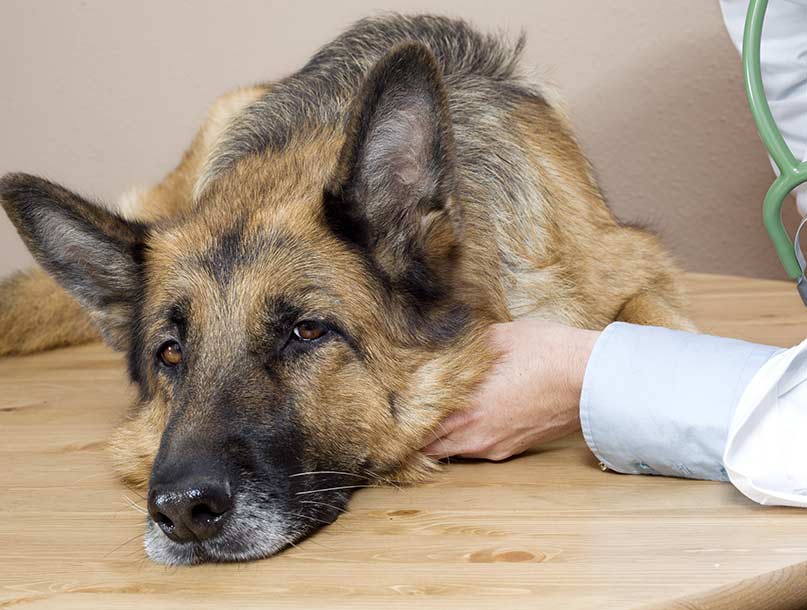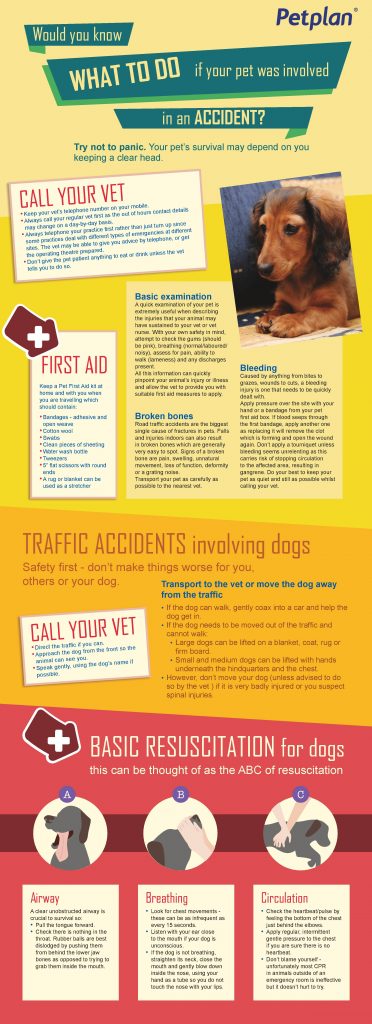
In the case of an emergency where your pet is involved in the accident, it is important to stay calm and not panic as your pets survival may count on you. Call your vet as soon as possible as they can advise you what to do or even where to go to get the best treatment for your pet as some clinics may have better equipment to assess the emergency.
It is important to assess your pet without doing any more damage. If it is not your pet, make sure your safety is the number one priority as it may attack you or get agitated easily due to the injury. If you feel comfortable in doing so, check the gums (should be pink), breathing (check for abnormalities in breathing), assess for pain, ability to walk, and if there is any discharge present. Once you have determined all these factors, getting this information to your vet quickly can determine the injury or illness and therefore the suitable first aid measures to apply.
Here???s some helpful tips when dealing with serious injuries:
Broken bones:
There are numerous ways a pet can break a bone including falls or the more common way through car accidents. Signs of a broken bone are pain, swelling, unnatural movement, loss of function, deformity or a grating noise. Transport your pet as carefully as possible to the nearest vet.
Bleeding:
Bleeding can be caused from anything from bites to grazes, wounds, cuts ??? all need to be treated quickly. Apply pressure over the item with your hand or a bandage from your pet first aid box. If blood seeps through the first bandage, apply another one as replacing it will remove the clot which is forming and open the wound again. Don???t apply a tourniquet unless bleeding seems unrelenting as this carries risk of stopping circulation to the affected area, resulting in gangrene. Do your best to keep your pet as quiet and still as possible whilst calling your vet.
A good First Aid box for your pet should include:
- Bandages ??? adhesive and open weave
- Cotton wool
- Swabs
- Clean pieces of sheeting
- Water wash bottle
- Tweezers
- 5??? flat scissors with round end
- A rug or blanket can be used as a stretcher
If you find a pet that is struggling to breath or cannot at all, the ABC of resuscitation can be used:
Airway
A clear unobstructed airway is crucial to survival so:
- Pull the tongue forward.
- Check there is nothing in the throat. Rubber balls are best dislodged by pushing them from behind the lower jaw bones as opposed to trying to grab them inside the mouth.
Breathing
- Look for chest movements – these can be as infrequent as every 15 seconds.
- Listen with your ear close to the mouth if your dog is unconscious.
- If the dog is not breathing, straighten its neck, close the mouth and gently blow down inside the nose, using your hand as a tube so you do not touch the nose with your lips.
Circulation
- Check the heartbeat/pulse by feeling the bottom of the chest just behind the elbows.
- Apply regular, intermittent gentle pressure to the chest if you are sure there is no heartbeat.
- Don???t blame yourself – unfortunately most CPR in animals outside of an emergency room is ineffective but it doesn???t hurt to try.
Click the link for a downloadable PDF version:??
If you have any other tips or tricks when dealing with an injured pet, let us know in the comments below.



